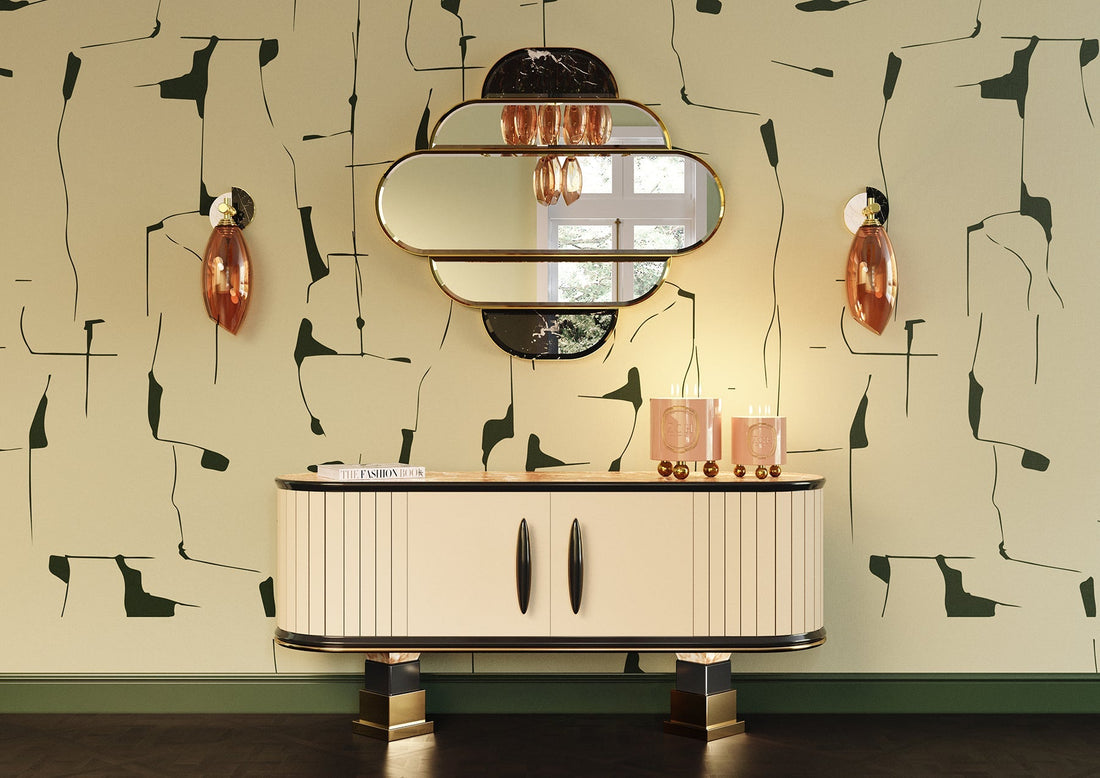
Vintage vs. Antique — and Why It Matters in Design
Let’s settle this once and for all: vintage and antique are not synonyms. They’re not interchangeable. And they definitely shouldn’t be used to upsell that suspicious “old-ish” vase your cousin found at a yard sale last summer.
In the world of design (and collecting, and bragging about your exquisite taste), knowing the difference between vintage and antique is crucial — not just to sound fancy at parties, but to make better choices for your home’s style, sustainability, and soul.
So buckle up and let's get into the difference
First, Definitions:
 image credit: Pinterest
image credit: Pinterest
Antique:
By textbook (and most reputable dealers), an antique is at least 100 years old. That’s the magic number. So, if you bought a chair made in 1920, congratulations: it’s officially an antique — and you may now charge extra for it if you ever decide to sell.
 image credit: Hommes.studio
image credit: Hommes.studio
Vintage:
Vintage is a little looser but generally means 20 to 99 years old — old enough to have a backstory, but not quite a grandparent. It’s often associated with a specific era, style, or trend. Think mid-century credenzas, 70s shag rugs, or that glorious 80s brass lamp you scored at the thrift store and told everyone is “vintage” (you’re correct, by the way).
So… Why Does It Matter?
Besides winning at trivia night, knowing what’s vintage vs. antique actually helps you:
Set Expectations:
Antiques tend to be rarer and sometimes more delicate. That 19th-century Louis XV side chair? It might look fabulous in your living room but probably shouldn’t double as your cat’s scratching post. Vintage pieces, on the other hand, can be more robust — especially mid-century furniture built for modern living.
Tell a More Authentic Story:
Your home’s charm comes from the real stories behind your decor. Mixing true antiques with vintage finds (and yes, even new pieces) creates layers and depth that big-box furniture just can’t fake.
Spend (or Save) Wisely:
Pricing can vary wildly. Antiques often cost more due to age, craftsmanship, and rarity — but not always! Some lesser-known antique styles can be more affordable than mass-produced “vintage-inspired” knockoffs at chain stores.
Be a More Sustainable Shopper:
Whether you buy vintage or antique, you’re rescuing quality pieces from landfills. Good for your conscience, bad for cheap flat-pack furniture everywhere.

image credit: Pinterest
How to Use Vintage and Antique in Design
Here’s your cheat sheet for mixing eras like a pro:
Balance old and new: Pair an antique wood table with modern chairs. Or put a vintage lamp on a sleek console. It keeps your space fresh, not fusty.
Mix styles carefully: French antiques next to mid-century pieces? Chef’s kiss. Victorian with Art Deco? A visual delight. Just ground them with a cohesive color palette so they don’t fight for attention.
Don’t overdo it: Even if your heart wants all the old things, your house still needs breathing room. Let a few antique or vintage standouts shine, then layer in simpler pieces.

Quick Recap
Antique = 100+ years old
Vintage = 20–99 years old
Both are better than brand new if you want personality, sustainability, and a good story to tell your guests (or followers).
In Conclusion
Knowing the difference helps you shop smarter, design better, and keep the soul in your space. So next time someone says, “Oh, I love your antique sideboard!” — you’ll smile, nod politely, and whisper to yourself, “Actually, it’s vintage Art Deco, circa 1930. But close enough”
-Juliette

